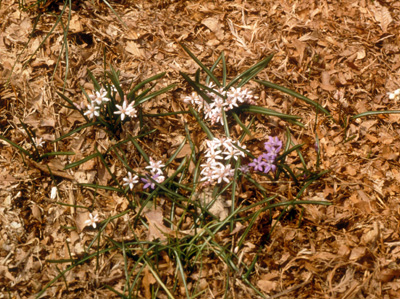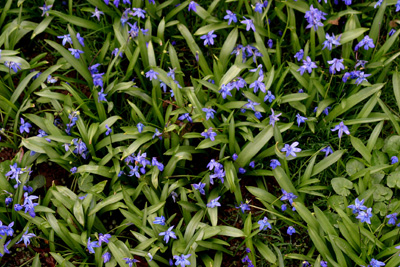Scilla bifolia

Fall is time for planting bulbs. Many gardeners are familiar with the spring bulb Scilla sibirica, but another great squill is Scilla bifolia.
Scilla bifolia is a beautiful, small squill which has an open flower head of tiny bright blue-lilac flowers in early spring. Colors can range from white, blue, pink, or violet. In the wild Scilla bifolia grows in groves and sandy fields in Austria and Germany. In the garden, it will grow in sun; it is also one of the bulbs that does particularly well in shade. Like other Scilla species it is fairly deer-resistant.

Scilla sibirica photo credit: D. Mattis
In the Delaware Valley, the most popular squill is Scilla sibirica which blooms in late March with tiny spikes of pendant, sky-blue flowers. Scilla bifolia is slightly less vigorous than Scilla siberica, however it still naturalizes in small drifts in the garden. Scilla bifolia would also be a nice addition to the rock garden or a small courtyard garden. The small clumps look great planted at the base of a small shrub such as Daphne x burkwoodii ‘Carol Mackie’ or Edgeworthia chrysantha.
Scilla bifolia is the 2009 fall plant dividend for the Scott Associates. As a member of the Scott Arboretum, you can pick up your dividend at the Fall Festival this weekend on Saturday, October 17 at 2 pm in Lang Music Building. All are welcome to come learn more about great bulbs for your garden with Jacqueline van der Kloet this Saturday as well.





No Comments